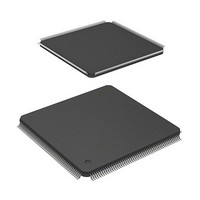HD6417709SF133B Renesas Electronics America, HD6417709SF133B Datasheet - Page 170

HD6417709SF133B
Manufacturer Part Number
HD6417709SF133B
Description
IC SUPERH MPU ROMLESS 208LQFP
Manufacturer
Renesas Electronics America
Series
SuperH® SH7700r
Datasheet
1.D6417709SBP167BV.pdf
(809 pages)
Specifications of HD6417709SF133B
Core Processor
SH-3
Core Size
32-Bit
Speed
133MHz
Connectivity
EBI/EMI, FIFO, IrDA, SCI, SmartCard
Peripherals
DMA, POR, WDT
Number Of I /o
96
Program Memory Type
ROMless
Ram Size
16K x 8
Voltage - Supply (vcc/vdd)
1.65 V ~ 2.05 V
Data Converters
A/D 8x10b; D/A 2x8b
Oscillator Type
Internal
Operating Temperature
-20°C ~ 75°C
Package / Case
208-LQFP
Lead Free Status / RoHS Status
Contains lead / RoHS non-compliant
Eeprom Size
-
Program Memory Size
-
Available stocks
Company
Part Number
Manufacturer
Quantity
Price
Company:
Part Number:
HD6417709SF133B
Manufacturer:
RENESAS
Quantity:
79
Company:
Part Number:
HD6417709SF133B
Manufacturer:
Renesas Electronics America
Quantity:
10 000
Part Number:
HD6417709SF133B
Manufacturer:
RENESAS/瑞萨
Quantity:
20 000
Part Number:
HD6417709SF133B-V
Manufacturer:
RENESAS/瑞萨
Quantity:
20 000
Part Number:
HD6417709SF133BV
Manufacturer:
RENESAS/瑞萨
Quantity:
20 000
- Current page: 170 of 809
- Download datasheet (5Mb)
6.2.4
PINT interrupts are input by level from pins PINT0–PINT15. The priority level can be set by
interrupt priority register D (IPRD) in a range from 0 to 15, in groups of PINT0–PINT7 and
PINT8–PINT15.
The PINT0/1 interrupt level should be held until the interrupt is accepted and interrupt handling is
started. Correct operation cannot be guaranteed if the level is not maintained.
The interrupt mask bits (I3–I0) in the status register (SR) are not affected by PINT interrupt
handling.
PINT0/1 interrupts can wake the chip up from the standby state when the relevant interrupt level is
higher than the setting of I3–I0 in the SR register (but only when the RTC 32-kHz oscillator is
used).
6.2.5
On-chip peripheral module interrupts are generated by the following ten modules:
Not every interrupt source is assigned a different interrupt vector. Sources are reflected in the
interrupt event registers (INTEVT and INTEVT2). It is easy to identify sources by using the value
of the INTEVT or INTEVT2 register as a branch offset.
A priority level (from 0 to 15) can be set for each module except UDI by writing to interrupt
priority registers A, B, and E (IPRA, IPRB, and IPRE). The priority level of the UDI interrupt is
15 (fixed).
The interrupt mask bits (I3–I0) in the status register are not affected by on-chip peripheral module
interrupt handling.
TMU and RTC interrupts can wake the chip up from the standby state when the relevant interrupt
level is higher than the setting of I3–I0 in the SR register (but only when the RTC 32-kHz
oscillator is used).
Rev. 5.00, 09/03, page 124 of 760
Timer unit (TMU)
Realtime clock (RTC)
Serial communication interfaces (SCI, IrDA, SCIF)
Bus state controller (BSC)
Watchdog timer (WDT)
Direct memory access controller (DMAC)
Analog-to-digital converter (ADC)
User-debugging interface (UDI)
PINT Interrupts
On-Chip Peripheral Module Interrupts
Related parts for HD6417709SF133B
Image
Part Number
Description
Manufacturer
Datasheet
Request
R

Part Number:
Description:
KIT STARTER FOR M16C/29
Manufacturer:
Renesas Electronics America
Datasheet:

Part Number:
Description:
KIT STARTER FOR R8C/2D
Manufacturer:
Renesas Electronics America
Datasheet:

Part Number:
Description:
R0K33062P STARTER KIT
Manufacturer:
Renesas Electronics America
Datasheet:

Part Number:
Description:
KIT STARTER FOR R8C/23 E8A
Manufacturer:
Renesas Electronics America
Datasheet:

Part Number:
Description:
KIT STARTER FOR R8C/25
Manufacturer:
Renesas Electronics America
Datasheet:

Part Number:
Description:
KIT STARTER H8S2456 SHARPE DSPLY
Manufacturer:
Renesas Electronics America
Datasheet:

Part Number:
Description:
KIT STARTER FOR R8C38C
Manufacturer:
Renesas Electronics America
Datasheet:

Part Number:
Description:
KIT STARTER FOR R8C35C
Manufacturer:
Renesas Electronics America
Datasheet:

Part Number:
Description:
KIT STARTER FOR R8CL3AC+LCD APPS
Manufacturer:
Renesas Electronics America
Datasheet:

Part Number:
Description:
KIT STARTER FOR RX610
Manufacturer:
Renesas Electronics America
Datasheet:

Part Number:
Description:
KIT STARTER FOR R32C/118
Manufacturer:
Renesas Electronics America
Datasheet:

Part Number:
Description:
KIT DEV RSK-R8C/26-29
Manufacturer:
Renesas Electronics America
Datasheet:

Part Number:
Description:
KIT STARTER FOR SH7124
Manufacturer:
Renesas Electronics America
Datasheet:

Part Number:
Description:
KIT STARTER FOR H8SX/1622
Manufacturer:
Renesas Electronics America
Datasheet:

Part Number:
Description:
KIT DEV FOR SH7203
Manufacturer:
Renesas Electronics America
Datasheet:











